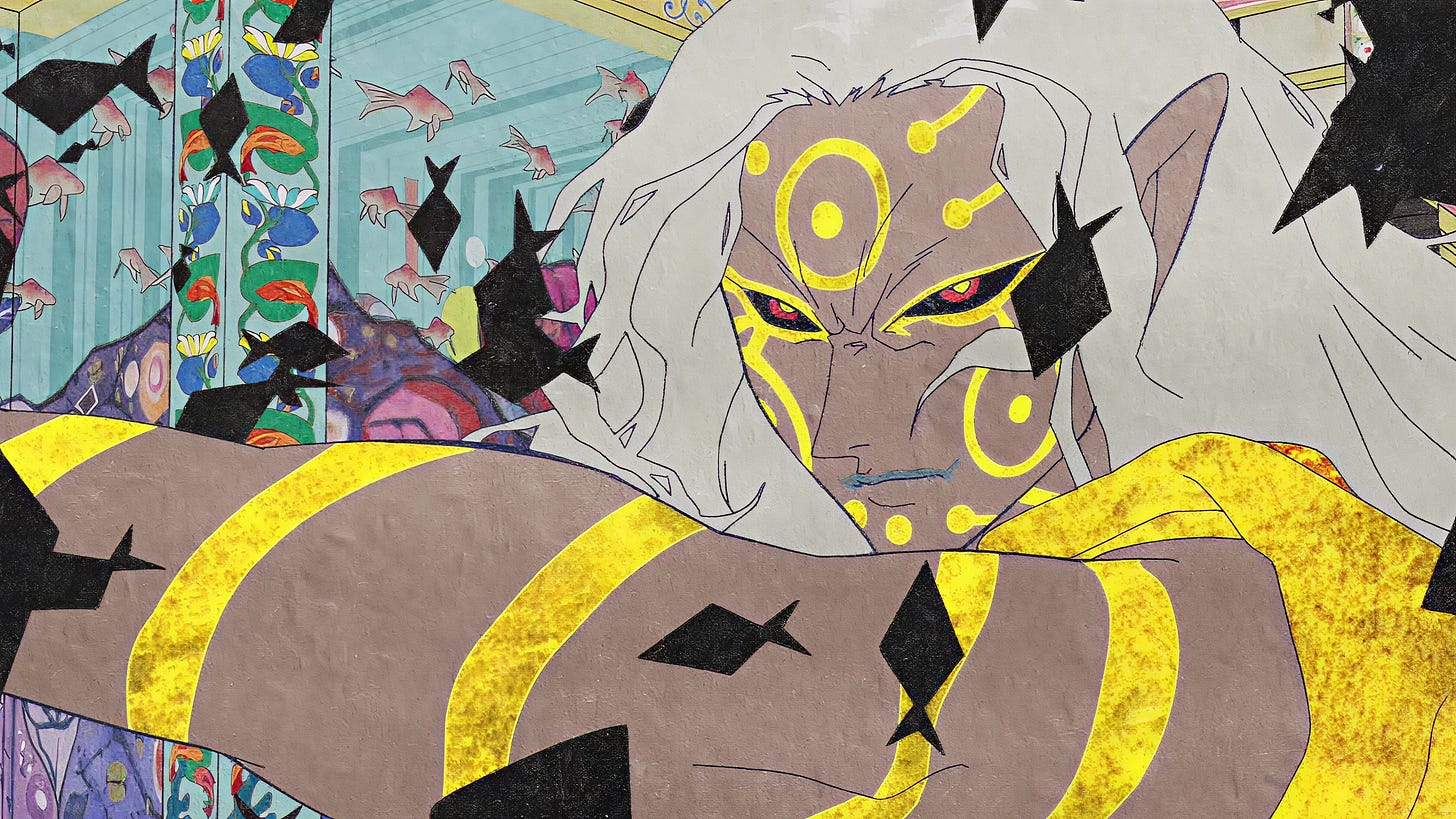Form, Truth, and Reason
A personal reflection on Mononoke (2007) and how it shaped my thinking as a designer
I didn’t expect a supernatural anime to mirror how I think about design. But Mononoke did. So I wrote this to share a bit of that moment. Not a design breakdown. Not a review. More like a quiet connection I noticed between an animated story and how I approach making things. If you’ve ever felt like ideas sometimes arrive from strange places, maybe this will resonate.
A bit about me: I’m a product designer working on dev tools at Figma. Designing tools for designers has always been my dream, and now I get to make it a reality. I care deeply about how tools shape us. In my free time, I love experimenting, prototyping, and sharing ideas with the community. Lately, I’ve been thinking more about the non-design things that shaped me as a designer: the random walks, the late-night movies, the quiet inspiration that comes from just paying attention.
I’ve been watching both the new Netflix adaptation and the original 2007 version of Mononoke, and there’s one idea I can’t stop thinking about.
In Mononoke, we follow a mysterious Medicine Seller who travels from place to place exorcising spirits called mononoke. But his sword isn’t something he can just pull out and use. To unsheathe it, he must first uncover three things:
The Form of the mononoke (what it is)
The Truth (what actually happened)
The Reason (why the spirit lingers)
The sword stays sealed until all three are fully understood. This ritual isn’t just technical. It’s symbolic. The Medicine Seller can’t force the spirit into submission. He has to listen, uncover, and understand the pain that gave it shape. Only then can he begin the exorcism. In one episode, the mononoke refuses to show its form, but the Medicine Seller says something that floored me: if he can reveal the truth and the reason, the form will appear on its own.
That’s when it clicked. This is exactly what I do in design.
The Concept of Form, Truth, and Reason
This triad wasn’t plucked from thin air. While it was created for the anime, it draws on a much older cultural logic found in Japanese traditions. You’ll find echoes of it in:
Kenjutsu (traditional swordsmanship), where practitioners study kata (form), makoto (sincerity/truth), and ri (principle/reason)
Shuhari: a framework for mastery in martial and creative practice: Shu (obey), Ha (break), Ri (transcend)
Tea ceremony, ikebana, and calligraphy, where form is essential, but intention gives it meaning
In many of these arts, there’s a familiar sequence:
Kokoro (心) – The heart or spirit
Kata (型) – The form
Ri (理) – The principle behind the form
It’s not a strict rule but a shared logic. Form, spirit, and principle work together. In tea, calligraphy, and ikebana, doing things with technical precision means little without the intent behind them. Form becomes real only when it carries truth.
I’ve never been to Japan, so I won’t pretend to understand these traditions deeply. If you do, I’d love to hear your perspective.
What Does This Have to Do With Design?
In long design projects, it’s easy to lose your way. When I was just starting out, one of my mentors told me: "Don’t rush to draw. Think first." But I’d always open Figma anyway.
Now I think maybe we were both right.
You can start from form. You can start from research. You can start wherever. But if you want to go deep—if you want to make something that feels true—you’ll need all three:
Form – the product or feature people will interact with
Truth – what’s really happening with users, and what they’re trying to do
Reason – why this solution matters, both emotionally and strategically
Sometimes we only have one. Sometimes two. But without the third, it rarely works. You can’t really act. You can’t really see.
And maybe that’s the lesson. Not just for design, but for everything:
Form reveals itself when truth and reason are understood.
In the end, the Medicine Seller doesn’t fight with strength. He fights with understanding. He listens. He uncovers. He reveals. Only then does he draw the sword.
References
Mononoke (TV series, 2007) — Original anime by Kenji Nakamura, introducing the Form–Truth–Reason ritual.
Mononoke the Movie: Phantom in the Rain (2024) — First film in the upcoming trilogy, expanding the same spiritual narrative framework.
Shuhari (Wikipedia) — Details the traditional Shu–Ha–Ri learning stages, with quotes from Aikido master Endō Seishirō.
Takuan Sōhō – The Unfettered Mind (Wikipedia) — Zen philosophy applied to swordsmanship, focusing on intention and ‘no-mind’.





Your thoughts ring true to me! I haven’t watched Mononoke yet, but while reading your article, I kept thinking about the idea: “If there's truth and reason, the form will follow.” Even if a product lacks a certain feature (or the feature doesn’t exist yet) people often come up with workarounds. For example, community-built plugins or companion tools that help process specific operations.
Thanks for the article! I subscribed!